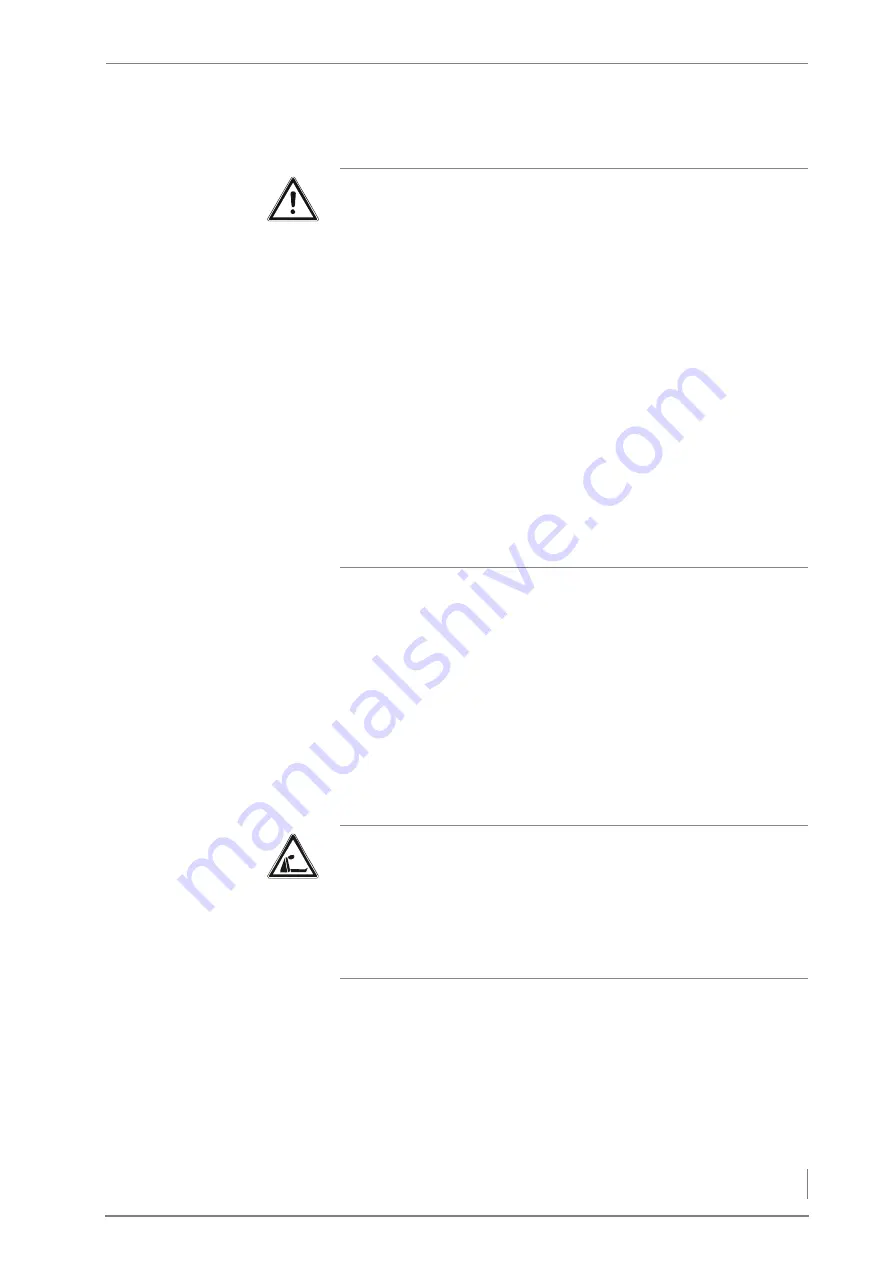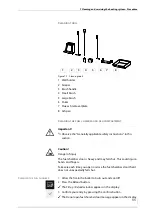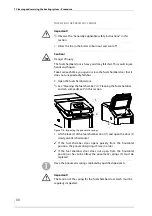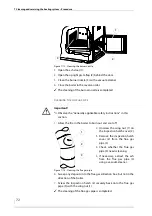
6 Using the heating system – Performing a chimney sweep test
59
O
N
THE
DAY
OF
THE
TEST
1.
On the day of test, heat up the boiler one hour before the
scheduled appointment.
✎
See section “6.3 Heating up the system” in this chapter.
2.
Only fill the fuel chamber up half way.
3.
Use log wood according to fuel recommendation (split, dry wood)
with a length of 50 cm, a maximum diameter of maximum 10 cm
and a maximum water content of 20%.
D
URING
THE
TEST
1.
Press the lock of the fuel chamber door downward.
2.
Lift the lock of the fuel chamber door and open the door slowly
until it is horizontal.
✓
The fuel chamber door opens automatically.
✓
The catch on the right pneumatic spring latches in place.
3.
Tamp the embers and remaining logs together in the fuel
chamber in the presence of the combustion engineer.
Important!
•
The boiler must have been heated at least once during the
period between the cleaning and the chimney sweep test.
•
Oak wood, wood briquettes, boards, scrap wood and wood chips
are not suitable for the chimney sweep test.
•
At the start of the test the boiler temperature should not be
below 60 °C. The temperature of the accumulator should not be
higher than 60°C. Ensure that the heating circuit has sufficient
heat transfer capacity.
•
The heating system must be fitted with a chimney draught
regulator to ensure that the maximum permissible flue draught
requirement of 20 Pa is not exceeded.
•
At the start of test, the residual oxygen value should be below
6%. The boiler must not set to the
AFO
operating status (firing
optimisation - only for HDG LC1 plus/HDG LC2 plus).
•
Having the test repeated by the combustion engineer or by HDG
specialists will incur charges.
Danger!
Danger of asphyxiation due to carbon monoxide
If the boiler is in operation, carbon monoxide can be emitted
through the open doors or lids.
Always keep the doors and lids closed. Do not leave them open any
longer than necessary and never leave them open unattended.
















































